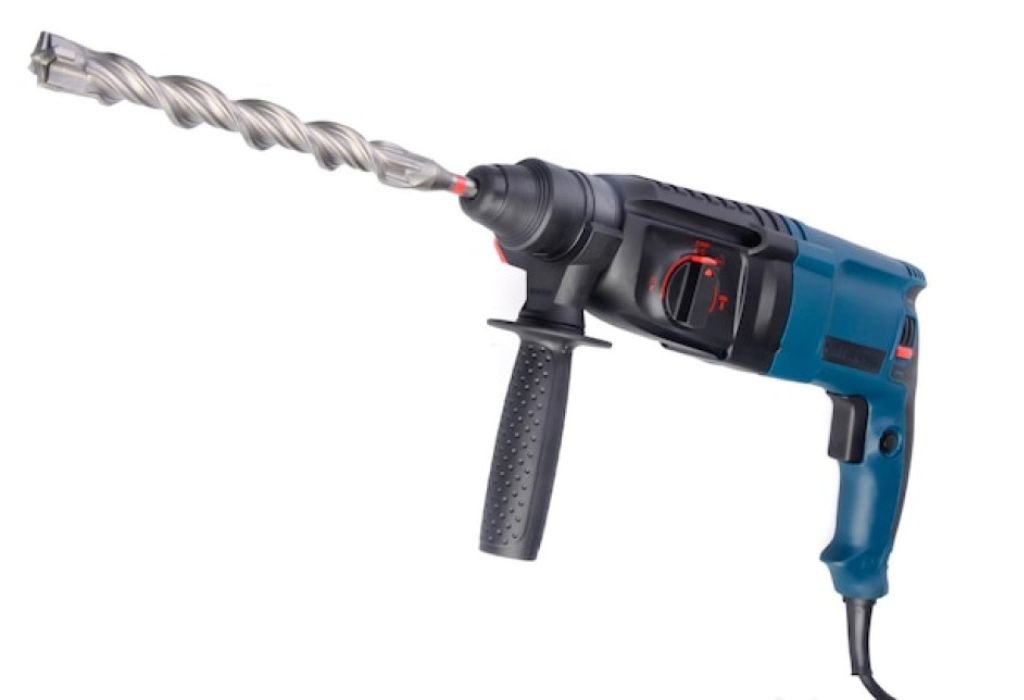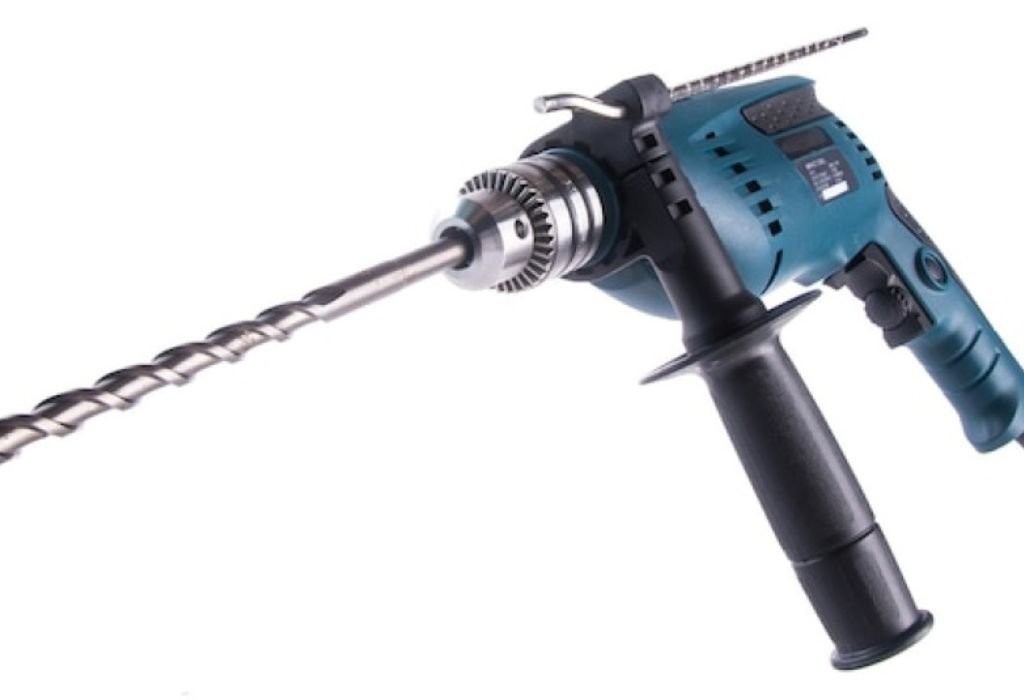Every homeowner or DIY enthusiast eventually faces a tough question: can i use a drill instead of a rotary hammer when tackling masonry or concrete projects?
The temptation is strong when a standard drill is already on hand, but the reality can be very different.
Imagine starting a renovation, only to find your drill struggling against a concrete wall. The bit overheats, dust clogs the hole, and progress slows to a crawl.
Many attempt this substitution out of convenience, but few realize the risks to both the tool and the operator.
The difference between these machines is not just power, but also the way force is delivered into the material.
According to industry data, rotary hammers can deliver impact energy up to 5 joules per blow, while hammer drills average less than 0.3 joules 【source: Bosch Professional】.
That energy gap explains why one tool breezes through rebar-reinforced concrete while the other overheats and stalls.
With tool sales for heavy-duty drilling projected to grow by over 6% annually 【source: Grand View Research】, more people are realizing the importance of choosing the right machine for the job.
This guide will uncover when a drill can serve as a temporary stand-in, when it will almost certainly fail, and how to avoid costly mistakes.
You will learn about tool mechanisms, safe drilling practices, risks of misuse, and clear guidelines on when to switch to a rotary hammer. By the end, you will understand how to protect your tools, your project, and your safety.
Understanding the Tools: Drill, Hammer Drill, and Rotary Hammer

Standard drills rotate bits using torque and speed. They work best for wood, metal, and light tasks. A hammer drill adds percussion, using cam plates to generate vibration. This helps in soft masonry, but energy per blow is limited. A rotary hammer is different. It uses an electro-pneumatic piston mechanism to generate higher impact energy. The SDS system locks bits securely, reducing slippage.
What is a rotary hammer?
It is a heavy-duty tool that delivers high impact energy using a piston-driven mechanism for masonry and concrete.
How does a hammer drill differ from a rotary hammer?
A hammer drill uses vibration from cam plates, while a rotary hammer uses a piston system with greater force.
Can a standard drill perform hammering?
No, unless it is a hammer drill variant, a standard drill lacks percussion capability.
Why are SDS bits important?
SDS bits fit securely in rotary hammers, allowing efficient power transfer without slipping.
What is impact energy?
Impact energy, measured in joules, shows the strength of each hammering blow.
When and Why Someone Asks: “Can I Use a Drill Instead of a Rotary Hammer?”
Most ask this question when they own only a drill but face masonry work. Cost is a major factor, as rotary hammers are more expensive. DIY projects often involve small anchor holes or occasional tasks, leading to attempts with a regular drill. However, drills are not built for sustained concrete drilling.
Is using a drill in place of a rotary hammer cost-effective?
Only for light work; heavy drilling increases wear and cost.
Will a drill last if used on concrete often?
No, frequent use in concrete shortens tool lifespan.
Can it damage the workpiece or bit?
Yes, bits can break, and materials may crack due to poor impact force.
Is there a safety risk to the operator?
Yes, kickback and slippage increase injury risk.
Are there exceptions where a drill works fine?
Yes, small shallow holes in soft brick or mortar may be manageable.
Methods & Techniques: How to Safely Use a Drill “Instead”
If using a drill, precautions are necessary. Always select high-quality carbide masonry bits. Set hammer mode if available. Use steady but light feed pressure. Work in stages and remove dust often. Allow cooling breaks to prevent overheating.
What bit type should be used?
Carbide masonry bits designed for hammering.
Should the drill be switched to hammer mode?
Yes, engage percussion mode if the drill supports it.
How to relieve stress on the drill?
Use short bursts and avoid forcing the tool.
How often to withdraw and clear dust?
Every few millimeters to prevent clogging.
When to stop and use a rotary hammer instead?
For holes deeper than ½ inch in hard concrete.
Performance Comparison: Drill vs Rotary Hammer
Rotary hammers outperform drills by a wide margin. They deliver higher BPM, more impact energy, and greater efficiency. Drills require more effort and wear bits faster. Operator fatigue is higher with drills, as vibration is not absorbed by a piston system.
How much faster is a rotary hammer?
It can drill 3–5 times faster in masonry than a drill.
What about energy per blow?
Rotary hammers produce several joules; drills offer less than 0.3 joules.
How about fatigue?
Drills transmit more vibration, causing faster fatigue.
Do bits wear faster in a drill?
Yes, inefficient impact increases wear.
What about long-term costs?
More broken bits and wasted time make drills costlier over time.
Risks, Pitfalls, and Common Mistakes
Using a drill for concrete poses risks. Bits can jam and cause kickback. Motors may overheat, leading to permanent damage. Hole alignment suffers due to weak impact. Masonry cracks more easily without controlled hammering force.
What happens if the bit binds?
The drill may stall or torque suddenly, risking injury.
Can the drill overheat?
Yes, heavy load overheats the motor quickly.
Is bit slippage common?
Yes, without SDS locking, bits slip often.
Does misalignment occur more often?
Yes, weak impact makes bits wander.
Can masonry crack or chip?
Yes, brittle surfaces may fracture.
Best Cases: When Using a Drill Instead Works
There are limited cases where using a drill is fine. Soft materials like cinder blocks or mortar joints allow shallow holes. Small anchor installations are manageable with care.
For what hole size is a drill acceptable?
Small holes up to ½ inch in soft masonry.
In what material types?
Mortar, cinder block, or soft brick.
How much depth is safe?
A few inches at most.
What about quantity?
Only a small number of holes is practical.
What helps improve results?
Drill guides, dust removal, and cooling breaks.
When to Stop and Use the Right Tool
For demanding jobs, a rotary hammer is essential. Deep holes, rebar, or reinforced concrete require piston-driven energy. Contractors always rely on rotary hammers for efficiency and durability.
What size or depth requires a rotary hammer?
Holes larger than ½ inch or deep holes in concrete.
What about hard materials?
Reinforced concrete always requires a rotary hammer.
How about repeated drilling?
Multiple holes strain a drill too much.
Does speed justify the cost?
Yes, saved time offsets rental or purchase cost.
What is the professional expectation?
Contractors always use rotary hammers on jobsites.
Maintenance, Bit Care, and Safe Operation

Proper care improves performance. Choose durable carbide bits. Replace worn or chipped bits. Let tools cool between sessions. Use dust suppression to reduce friction. Safety gear is essential to prevent injury.
How to choose durable masonry bits?
Use high-quality carbide bits rated for hammering.
When to discard a bit?
When cutting edges are dull or chipped.
How often to rest the tool?
Every few minutes during heavy drilling.
Should lubrication be used?
Light water mist helps reduce friction.
What protective gear is essential?
Safety glasses, gloves, ear plugs, and masks.
Summary Comparison Table
| Feature | Drill (Hammer Mode) | Rotary Hammer |
| Impact Energy | <0.3 joules | 2–5 joules |
| Speed in Concrete | Slow | Fast |
| Bit Retention | Standard Chuck | SDS Locking |
| Operator Fatigue | High | Lower |
| Suitable Hole Size | ≤ ½ inch | > ½ inch |
| Material Suitability | Soft Brick, Mortar | Concrete, Stone, Rebar |
| Longevity | Low in masonry use | High |
Conclusion
The answer to can i use a drill instead of a rotary hammer depends on project scope. A drill may work for small, shallow holes in softer materials. For serious masonry, concrete, or repeated use, it is unsafe, inefficient, and damaging.
The rotary hammer remains the best choice for heavy-duty drilling. Its piston mechanism, SDS system, and high impact energy ensure speed and safety. Avoid risks by matching the right tool to the right task. For large or reinforced jobs, invest or rent a rotary hammer and protect your time, tools, and health.

I’m John F. Nicholas, the founder, lead writer, and drill enthusiast behind 101drill.com. With years of hands-on experience in power tools and DIY projects, I created this platform to share practical knowledge, expert tips, and real-world insights to help others master the art of drilling.
